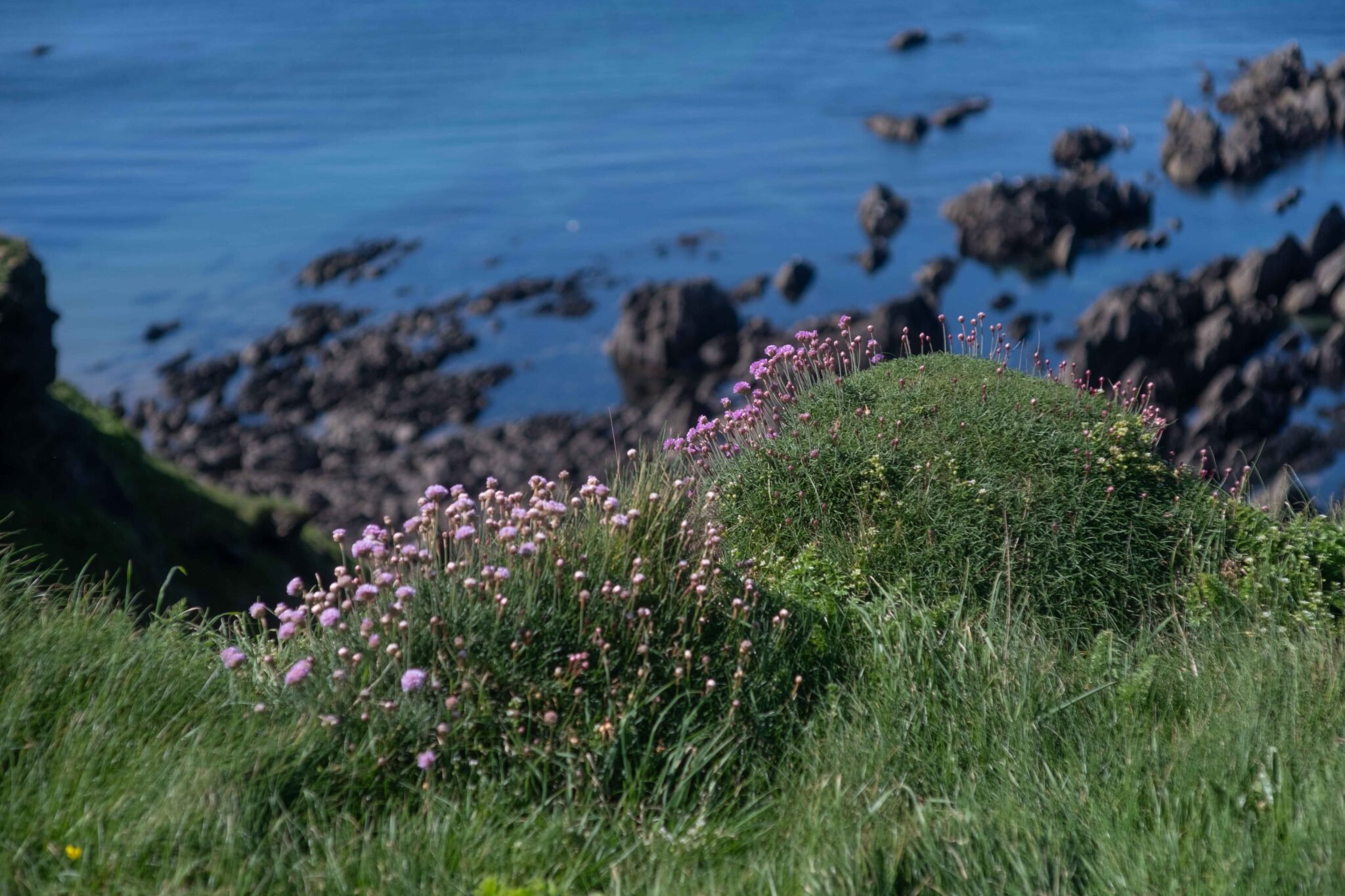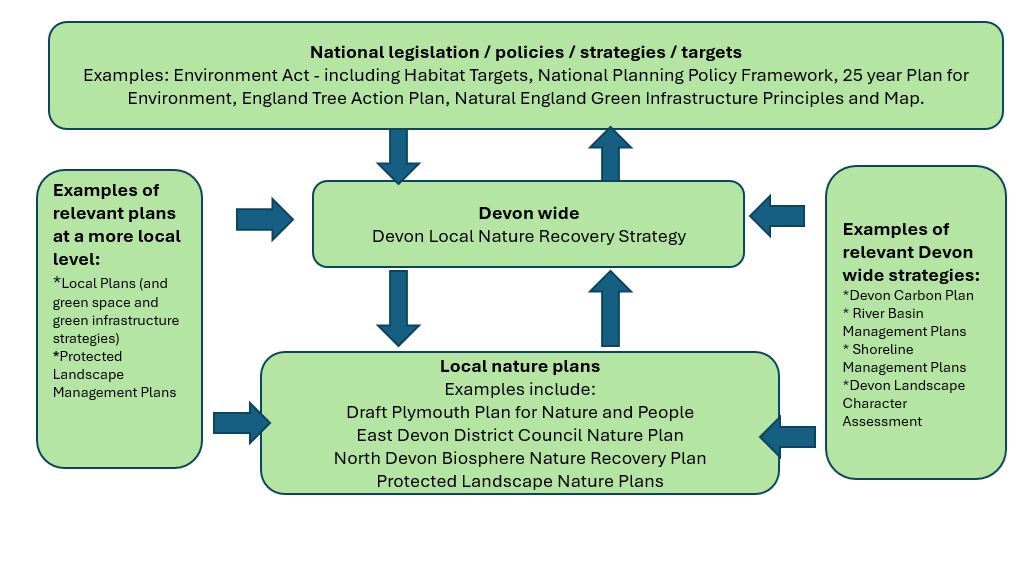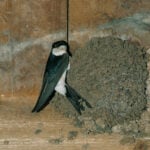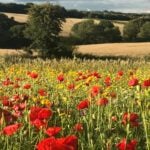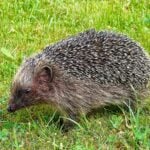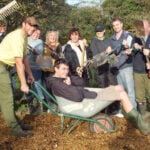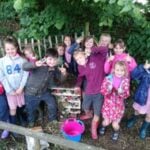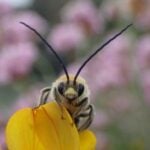Our vision: Devon’s rural and urban wildlife-rich landscapes support a high quality of life for everyone. We have clean water, healthy soils, reduced flooding and abundant pollinators. We’re all happier and healthier through our connection with nature.
1. Why we need a strategy for nature’s recovery
Nature gives us our food, clean water and fresh air. It stores carbon, pollinates our crops and controls floods. It brings us joy, calming our minds and lifting our spirits. We can’t live without it.
However, nature is under extreme pressure. Our natural habitats are fragmenting and decreasing and wildlife is declining faster than at any other time in human history. Today, the UK is one of the most nature-depleted places in the world, in the bottom 10% of countries globally. 38% of our species have declined in abundance (State of Nature Report 2023) and 13% are facing extinction, including many vital pollinators.
Although Devon remains green and beautiful, our county is also nature-depleted. You may have noticed there are fewer insects, songbirds and hedgehogs. But there is hope.
Nature is resilient and given space and the right conditions it will bounce back. Otters were once on the brink of extinction in Devon but are now widespread. Numbers of puffins are increasing on Lundy and Devon remains a stronghold for rare species such as greater horseshoe bats and dormice.
While nature is resilient, humans are creative. We know we can do things differently. With good design we can restore balance and make room for nature alongside all the other things we need, such as food, energy, housing, shops, offices, hospitals, schools, roads and railways.
All across Devon, lots of great work is already happening to reverse nature’s decline and create a healthier, sustainable future. And there are huge opportunities to do more. We all have a part to play, both on our own and by working together.
The Devon Local Nature Recovery Strategy gives an overview of Devon’s wildlife and sets out priorities and actions. It’s a tool to help us all do our bit to create a wildlife-rich Devon, today and for generations to come.
2. Who the Local Nature Recovery Strategy (LNRS) is for
This LNRS is for everyone. We all need to take action to achieve the priorities set out in this strategy.
We can all join in with the great work that’s happening to help nature. Everyone has a part to play including farmers, foresters, other land managers, gardeners, volunteers, developers, educators, community groups, funders, policymakers and voters.
See How to use the LNRS below and look out for the case studies on the habitats and species pages. They show some of the projects that are already making a real difference across Devon.
3. Statutory requirements for LNRSs
48 Responsible Authorities have a statutory duty under the Environment Act 2021 to work with others to produce an LNRS for their area. Together, these strategies will help to create a nature recovery network that covers the whole of England.
They are designed to help us reverse declines in nature by identifying what we most need to do and where we most need to do it. For more information see the drop-downs below and LNRS national requirements in the Information section.
To align with statutory requirements all LNRSs must include the following:
- A statement of biodiversity that sets out:
- a description of the strategy area and its wildlife
- opportunities and pressures for recovering or enhancing wildlife
- the priorities for recovering or enhancing wildlife (bearing in mind the contribution this can also make to other environmental benefits)
- actions required to achieve the priorities.
- A local habitat map that shows:
- designated sites and statutory irreplaceable habitats
- areas where actions to manage, restore and create habitats are most needed.
They are:
- Voluntary.
- For everyone – whether you’re thinking about action for a garden, farm, woodland, landscape or whole county.
- A single vision for nature recovery.
- Helping to target funding such as Environmental Land Management (government agri-environment funding), Biodiversity Net Gain (statutory developer contributions), Heritage Lottery Fund applications and private investment.
- Informing other strategies such as Local Plans, Land Use Frameworks and planning decisions.
- Part of a ‘nested suite’ of nature strategies (national to parish) that help to deliver national wildlife targets and inform more detailed nature strategies produced at a more local level.
- A way to help us work together for nature across landscapes, joining up ideas and actions so they have more impact.
- They do not impose new legal designations or protections.
- They do not restrict land use or prescribe how it should be used. For more information please see the LNRS Planning Paper.
- They are not a delivery plan. This is the next step.
4. Devon’s LNRS
This strategy covers the whole of the county of Devon, including Torbay and Plymouth. It’s led by Devon County Council as the appointed Responsible Authority.
It is full of useful information about nature, what it needs most and where to find out more.
It’s been developed through collaboration with a huge range of partners including ecologists, farmers and other land managers, educators, community groups, local authorities, protected landscapes, government agencies and the general public. It’s been produced as a website to make sure it’s easy for everyone to access and use. See Developing the Devon LNRS in the Information section for more information.
5. How to use Devon’s LNRS
- Read the Summary page to get an overview of priorities and cross-cutting themes and actions (page to be fully developed following consultation).
- Explore the Viewer to see where action is most needed in your area for habitats and species. Click on the layers for headline information and links to the relevant habitat and species pages.
- Read the Habitats and Species pages to find out more about Devon’s habitats and Devon Special Species. These pages include lots of information including the priorities and actions needed to help nature recover. The species page also includes a link to Invasive non-native species.
- Read the Wider benefits pages to see how nature provides other benefits such as water quality, flood control, carbon capture and health and wellbeing.
- See the Information pages for more about the background to the strategy, including LNRS Guidance notes, national targets and a paper on the Devon LNRS and planning (under Supporting Information).
- Use the search function at the top of the page to find what you’re looking for.
- Hover over words with the glossary symbol to find out what they mean.
This LNRS is for everyone. We all need to take action for wildlife and create healthy natural systems:
Absolutely everyone can take action for wildlife – plant a window box full of flowers, dig a pond, join a wildlife organisation, volunteer, teach, campaign, cut a hole in your fence, embrace slugs and spiders, turn outside lights off, have a compost heap…..the list is endless. Explore the LNRS and let us know what you are doing by adding it to the Devon Delivery map.
Listen to Andy Gray, a Devon farmer, talking about the Devon LNRS.
Farmers and foresters manage more land in Devon than anyone else and have a critical role to play in helping to deliver the priorities in the LNRS.
Devon’s heaths, moors, mires and grasslands all need grazing to maximise their wildlife value. Hedge corridors need managing. Arable, insect-rich grasslands and field margins can support farmland birds, bats and rare arable plants.
Devon’s woodlands need managing and connecting to create the varied structure that wildlife needs.
The LNRS can be used to:
- Provide information to support funding applications such as Environmental Land Management schemes.
- Better understand how to contribute to Devon’s wildlife priorities (use the Near me function on the Viewer).
- Find information on habitat and species management and sources of advice.
- Understand wildlife priorities across landscapes, helping collaborative working.
- Understand how and where restoring nature can most help to achieve wider priorities such as improved water quality, carbon storage and natural flood management.
- Share success stories and learning through the LNRS delivery map.
Devon’s green spaces provide critical stepping stones in our nature network. Many are already wildlife rich, home to bats, birds, small mammals and insects. Some support Devon Special Species. The horrid ground weaver spider can only be found in Plymouth parks and nowhere else on earth. The rare bithynian vetch is found in Exmouth and on coastal grasslands at Sandy Bay caravan park. Exeter’s road verges support bee orchids and greater horseshoe bats fly through Buckfastleigh’s parks.
Green space managers can use the LNRS to find out about wildlife priorities in their area and what to do to for specific habitats and species. The Green spaces, gardens and buildings page gives generic advice.
Communities across Devon are working to restore wildlife in lots of different ways, such as restoring orchards, creating wildlife-rich meadows, surveying harvest mice, managing churchyards for wildlife, putting up swift boxes and campaigning to reduce pesticides.
Community groups looking for ideas can use the LNRS to find out about priorities in their area or to see how what they’re already doing is helping to achieve Devon-wide nature recovery priorities. See the Habitats and Species pages and the Connecting people and nature page for links to Wild about Devon, the Local Nature Partnership’s community action network.
Schools, teachers and learners can use the LNRS as a resource to learn more about Devon’s wildlife and the priorities and actions needed in their area. Find out about accessible habitats to visit by following links in the Where to visit section on each habitats page. Explore the Habitats and Species pages, the Viewer and the Connecting people and nature page for a link to the Network for Environmental Educators in Devon.
Planners and developers have to make sure that developments leave nature in a better state by providing statutory Biodiversity Net Gain (as well as ensuring that other wildlife legislation requirements are met). The LNRS highlights opportunities to enhance wildlife through high-quality design, rather than restricting development. The provision of BNG and design of green spaces should all help to meet LNRS priorities. See the LNRS Planning Paper for more information.
6. Next steps
The Devon LNRS is out for consultation until 5th November 2025. It needs to be finished by December 2025 when it will be formally sent to the Supporting Authorities for final sign-off (they are legally required to have 28 days) before its final publication. It’s the first version and can be updated and improved throughout this review process. The development of LNRSs has been a huge learning curve locally and nationally.
Once published, the statutory LNRS cannot be changed until the Secretary of State announces a review. Defra has not yet shared details on how Responsible Authorities should monitor or review the LNRSs.
The LNRS will replace the Devon Biodiversity Action Plan (archived), the Strategic Nature Areas and the current list of Devon Species of Conservation Concern and Devon Special Species.
7. How to share what you’re doing to help nature in Devon
To help us all work together and see the amazing range of work going on for nature across Devon, please add what you’re doing to the Devon Nature Recovery Delivery Map.

